How Old Are the Baby Bettas at Petco
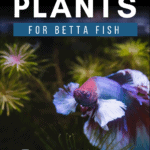
What are the best plants for betta fish?
That's a question you'll be asking if you're setting up a tank for your new betta fish.
Did you know that bettas love plants of all kinds? Well, they do!
Thick planting provides somewhere safe for your betta to hide, flat-leaved plants create a hammock where your pet can rest, while free-floating species are perfect for bubble nest building and for sheltering fry.
If you're a beginner, you'll need to know whether to use real or fake plants. Also, you need to know the maintenance and care requirements of different plant species.
In this guide, we take a look at 27 aquatic plants that work well in betta tanks, as well as answering all your questions.
Do Betta Fish Eat Plants?
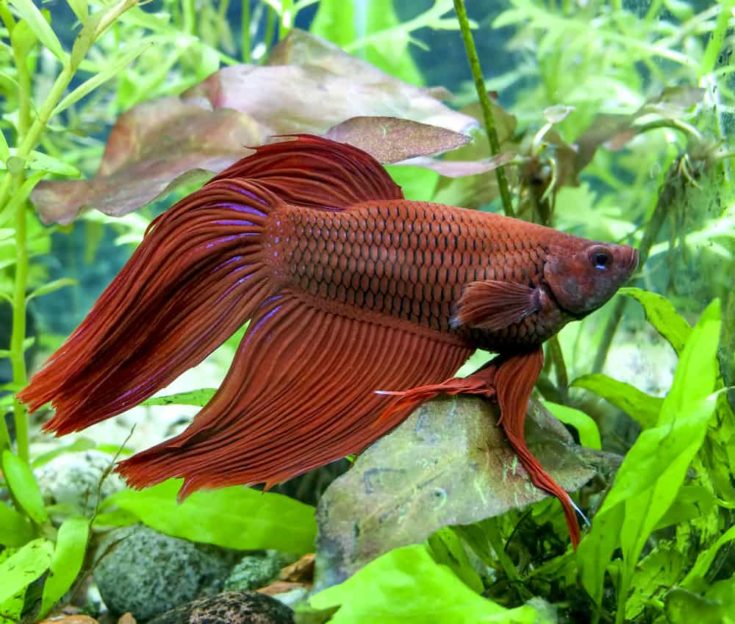
Betta fish are technically classified as omnivores, although plant matter and algae form a very small part of their diet in the wild. The betta needs a high-protein diet, most of which comes from meaty foods.
If you have algae growing on the live plants in your betta's tank, you may see your betta nibbling at the plant's leaves occasionally, but it's the algae that your pet is after, not the actual plant.
Betta-Safe Plants
Most of the popular aquatic plants that you can use in a planted betta tank are betta-safe.
However, many of the plants that are sold with a betta bowl or a vase with a plant on top should never be placed in an aquarium.
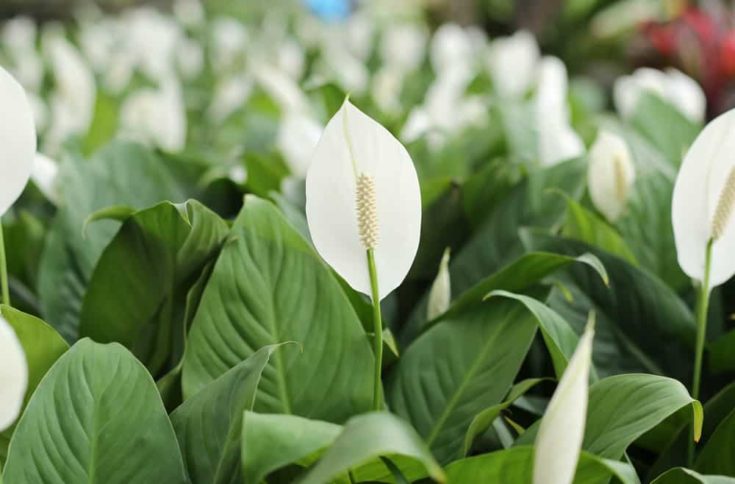
Those plant species include bamboo and peace lilies. Although your betta buddy won't eat the plants, they may contain chemicals that are toxic to fish. The same applies to the betta fish terrarium, which often contains some houseplants, rather than true aquatic species.
Mistaken Identity
Aquatic plants are supplied to the trade by large growers, primarily in Europe and the Far East. These operations produce a wide range of aquarium plants and houseplants. Stores generally order large bunches of mixed plants, often including non-aquatic species.
So, how can you spot a houseplant?
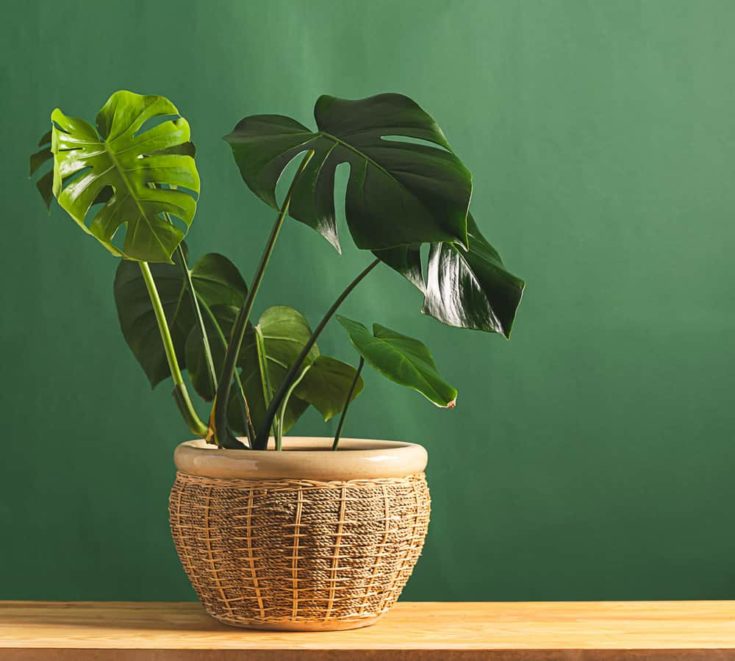
- Avoid anything that has a variegated leaf, i.e., red and green or green and white.
- A houseplant will stand erect in a pot unassisted, whereas most aquatic species droop when removed from the water.
- House plants have leaves that are shiny and feel waxy.
- The tips of non-aquatic plant leaves are usually pointed to allow rainwater run-off.
All non-aquatic plants gradually die and decompose in the tank, poisoning the environment by causing a spike in pH levels and boosting nitrate levels as they rot.
Bottom line; you don't want houseplants in your betta tank!
Best Live Plants for Betta Fish Tanks
In this section of our comprehensive guide, we list 27 of the best live plants for betta fish.
1. Amazon Sword
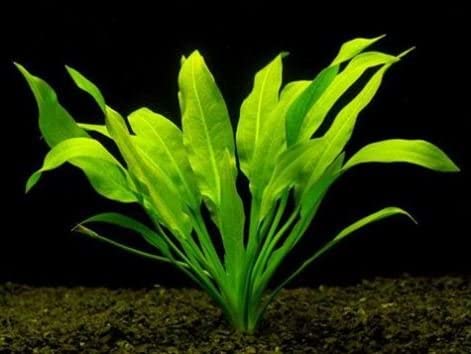
- Full name: Amazon Sword Plant (Echinodorus bleheri)
- Care difficulty: Easy to Moderate
- Light Level: High
Check The Price
The Amazon Sword plant is a tropical, broad-leaved species that can grow up to three feet tall, although aquarium specimens don't generally reach that size. That said, the Amazon sword is generally recommended for a larger aquarium of at least 10 gallons and is not suitable for a nano tank or small setup.
The plant should be firmly anchored in at least three inches of the substrate to prevent the leaves from catching the water flow in the tank and being uprooted. Also, the species requires a nutrient supplement and additional CO2 to boost growth.
Bettas love to rest on the plant's broad, hammock-like leaves, which also provide an extra surface area on which beneficial bacteria can grow. You can propagate the plant by planting its seeds in moist sand or simply by removing new plants that develop on submerged flowering stems and planting them directly into the substrate.
Periodically, remove dead or algae-covered leaves by pinching or trimming them cleanly at the base of the stem.
2. Pygmy Chain Sword Plant
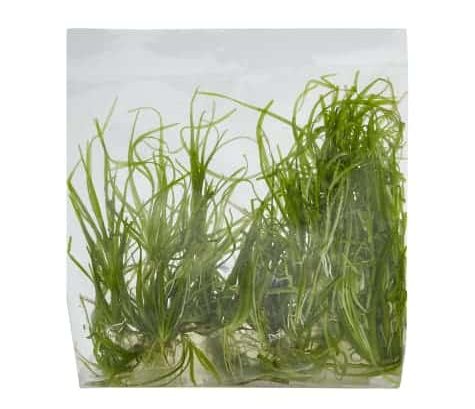
- Full name: Pygmy Chain Sword Plant (Echinodorus tenellus)
- Care difficulty: Moderate
- Light Level: High
View on Petco
The Pygmy Chain Sword plant is often used by aquascaping enthusiasts as a carpet plant in tropical tank setups.
The plant self-propagates by sending out runners underneath the substrate. All along the length of the runners, new sword plants emerge. These baby plants mature and grow, branching out even further along the floor of the aquarium until a beautiful "lawn" of lush plants is established.
The Pygmy Chain Sword plant is moderately easy to grow, being tolerant of a wide range of temperatures and pH conditions. However, the plant does need high light levels and a nutrient-rich substrate to encourage growth and spread. That makes this species an ideal foreground plant for betta fish tanks, which tend to be on the small side. So, you can easily keep the lighting levels high and bright enough for the Pygmy Chain Sword plant.
As regards the maintenance of these plants, you may need to periodically pinch out some of the growth to keep the spread of the runners under control.
3. Glossostigma
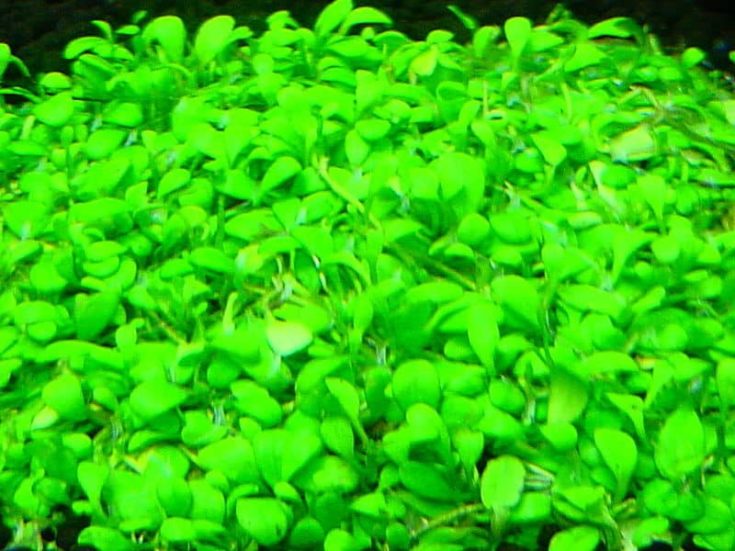
- Full name: Glossostigma elatinoides
- Care difficulty: Difficult
- Light Level: High
Glossostigma elatinoides is a favorite choice of plant for advanced aquarists who want to create a Japanese-style theme in their betta tank. These small aquarium plants come from Australasia, where they grow submerged in bogs and are immersed in lake and pond shores. The plant grows to a height of only a couple of inches, making the species ideal for foreground use.
Growing Glossostigma elatinoides is not easy. The plant requires a high level of light. If the lighting in the aquarium is not bright enough, the plant grows upward toward the light, rather than spreading and bushing out. So, when you plant this species, make sure that it's not shaded by other plants or decorations.
Ideally, Glossostigma should be used in shallow tanks so that plenty of light is available. That makes the species perfect for a betta tank. To encourage the plant to spread and form a carpet across the tank bottom, split each pot into several smaller bunches. You can also boost growth by using CO2 and keeping the water on the soft side.
Propagation occurs via runners, splitting the plant, taking cuttings, and removing daughter plants from the main stem.
4. Marimo Moss Balls
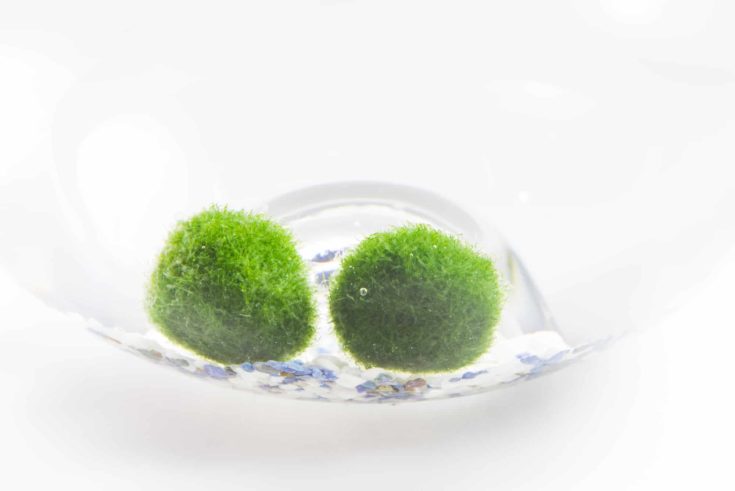
- Full name: Aegagropila linnaei
- Care difficulty: Moderate
- Light Level: Low to Moderate
Marimo Moss Balls are one of the best aquarium plants for bettas and are widely available from good fish stores and online.
Aegagropila linnae are actually not plants, but a species of algae that form bright green spheres. The balls are found on lake beds, where the gentle water flow gradually and relentlessly shapes the algae into their familiar spherical shape.
Marimo Moss Balls are perfect for a tank with low or indirect lighting, and they prefer a temperature of under 75o Fahrenheit, so they can be used in unheated tanks too. The water quality must be good with few nutrients and levels of ammonia, nitrite, and nitrate as close to zero as possible.
I find that betta fish love these unusual additions to their tank, using them as resting places and often pushing the moss balls around like footballs! Marimo Moss Balls don't require maintenance, although you must be mindful that the spherical shape may become flattened after a while if the current in the tank is too slow.
5. Bolbitis Difformis Baby Leaf Fern
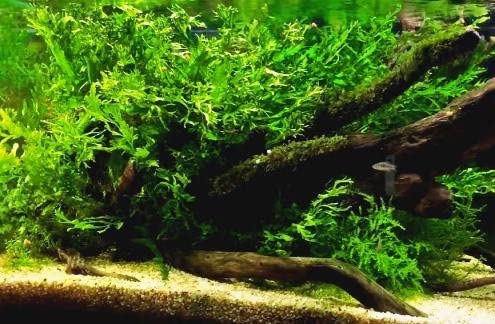
- Full name: Bolbitis heteroclita difformis
- Care difficulty: Moderate
- Light Level: Low to Moderate
Check on Amazon
Bolbitis heteroclita difformis is a small, fine-leaved species of dwarf fern that is sometimes sold under the name, Mini Bolbitis. The plant comes from the island of Negros in the Philippines but wasn't discovered as an aquarium plant until very recently.
The plant can grow submerged or immersed, although the underwater part of the plant is very slow to grow and its parsley-like leaves are smaller than those of the emerged part of the plant. The plant can be grown attached to driftwood or rocks with twine until the roots take over to form an anchor.
The plant is dark green in color with delicate, pinnate leaves, growing to around three inches in height. Eventually, Bolbitis heteroclita difformis will form a dense carpet if given the right conditions.
You can propagate the plant relatively easily by cutting off daughter plants from the main stem or taking cuttings. The plant will spread by putting out rhizomes, but it is very slow to grow.
6. Pennywort
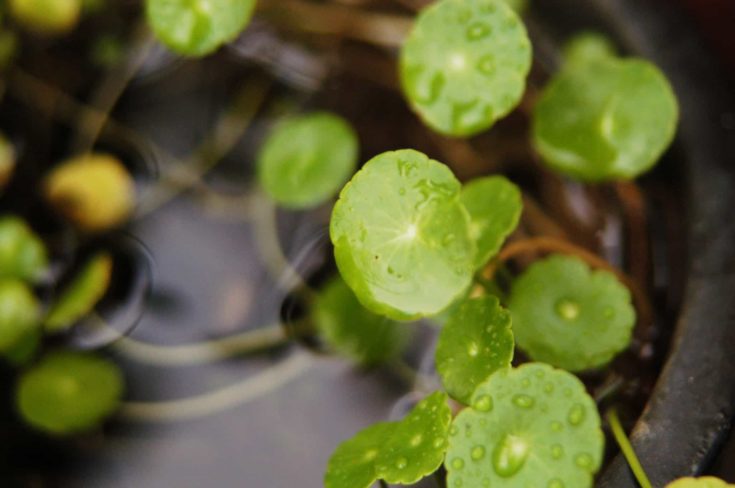
- Full name: Brazilian Pennywort, Hydrocotyle leucocephala
- Care difficulty: Easy
- Light Level: Low
Pennywort is popular with hobbyists for its versatility and easy-care needs. The plant comes from marshes and wetlands in Northern Argentina to Southern Mexico.
Pennywort is named for its dime-sized, penny-shaped leaves. The leaves grow alternately on a vine-like stem that quickly grows to reach eight inches or so in height. At each leaf joint, tiny white root shoots appear. At the surface of the water, the plant produces white blossoms.
The plant can grow underwater and float on the surface too, providing the perfect place for your betta to build a bubble nest or hide when he wants to. The plant is also edible, tasting somewhat like watercress if you fancy adding a few sprigs to your salad!
Pennywort is easy to care for and doesn't need a lot of light to do well, gravitating toward the surface as it grows to reach the light. You will need to trim the plant fairly frequently to prevent the leaves from covering the surface completely so that your betta can feed freely and breathe air when he needs to.
7. Cryptocoryne Green Gecko
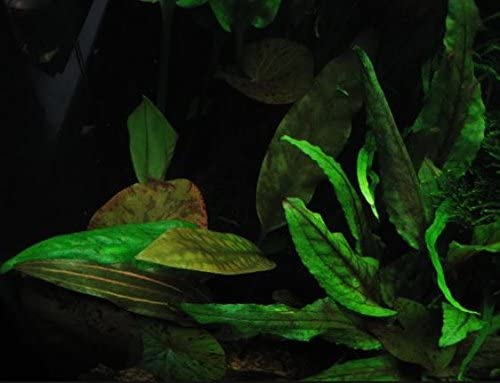
- Full name: Cryptocoryne wendtii Green Gecko
- Care difficulty: Easy
- Light Level: Low to Medium
Check The Price
Green Gecko is a great choice for beginner hobbyists thanks to its tolerance of a wide range of aquarium conditions and its hardiness.
The plant comes from Sri Lanka and is an extremely attractive, broad-leaved plant. The leaves are pale green with a reddish-brown zone in the center of the leaf around the stalk and a dark, red-brown midrib. Bettas love to rest on the leaves of the plant whose wavy leaf margins create the perfect hammock shape for your snoozing fish.
Like many of the Cryptocoryne species, Green Gecko grows slowly and is pretty undemanding when it comes to its care requirements. You can encourage more vigorous, lush growth by providing good quality LED lighting, CO2, and high-quality aquarium soil.
To propagate the plant, simply snip off new plantlets from the mother plant and put them into some aquarium soil. With its five to six-inch leaves, this low-growing plant is perfect for the midground of your planted betta tank.
8. Duckweed
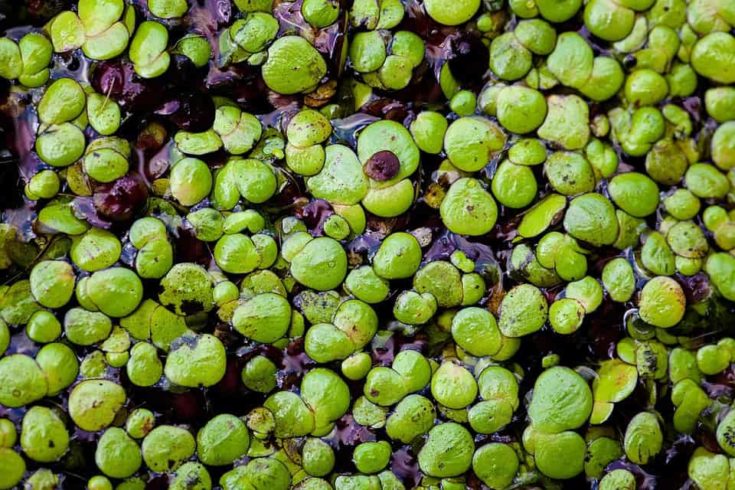
- Full name: Duckweed (Lemna minor)
- Care difficulty: Easy
- Light Level: Low to High Light
Duckweed is an incredibly easy to grow aquatic plant that's perfect for creating a natural, swampy vibe in your betta's tank. The plant is also excellent at absorbing excess nutrients from the water, as well as providing the perfect medium for bubble-nesting. My fish love duckweed! It makes a wonderful hiding place for shy species and provides safety and shelter for vulnerable fry.
However, there is a downside to Duckweed in that it does grow extremely vigorously, and it can prove to be difficult to manage once it has a foothold in the tank. Duckweed is tolerant of any strength of flow rate and proliferates with frightening rapidity. A single plant can multiply X three in just one day!
Too much Duckweed can cover the surface of the water completely, preventing your betta from feeding and breathing air when he needs to. Also, the weed will block out precious light to plants at the lower levels of the setup, retarding their growth. One simple and easy way to control Duckweed is to use a ring of plastic tubing to restrict the surface area that the plant can cover.
9. Hygrophila
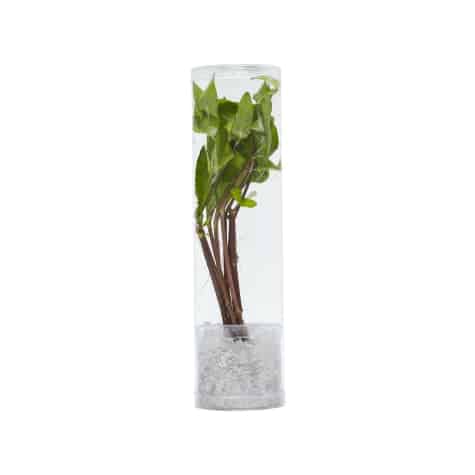
- Full name: Hygrophila polysperma
- Care difficulty: Easy
- Light Level: Low to Moderate
Check on Petco
Hygrophila is another kind of broad-leafed plant that's loved by betta fish and their owners. The plant's leaves make perfect resting spots for the fish, and the species can grow up to 28 inches tall, providing plenty of background cover for shy species.
You will need a tank of 20 gallons plus to accommodate one of these plants, as they do grow extremely quickly and will soon overrun a small aquarium.
Hygrophila does best with high light levels to prevent leaf-drop and keep it looking good. The species has bright green leaves, and there is also a red-leafed form available that makes a very attractive splash of color, providing that your lighting levels are sufficient.
10. Cryptocoryne Wendtii
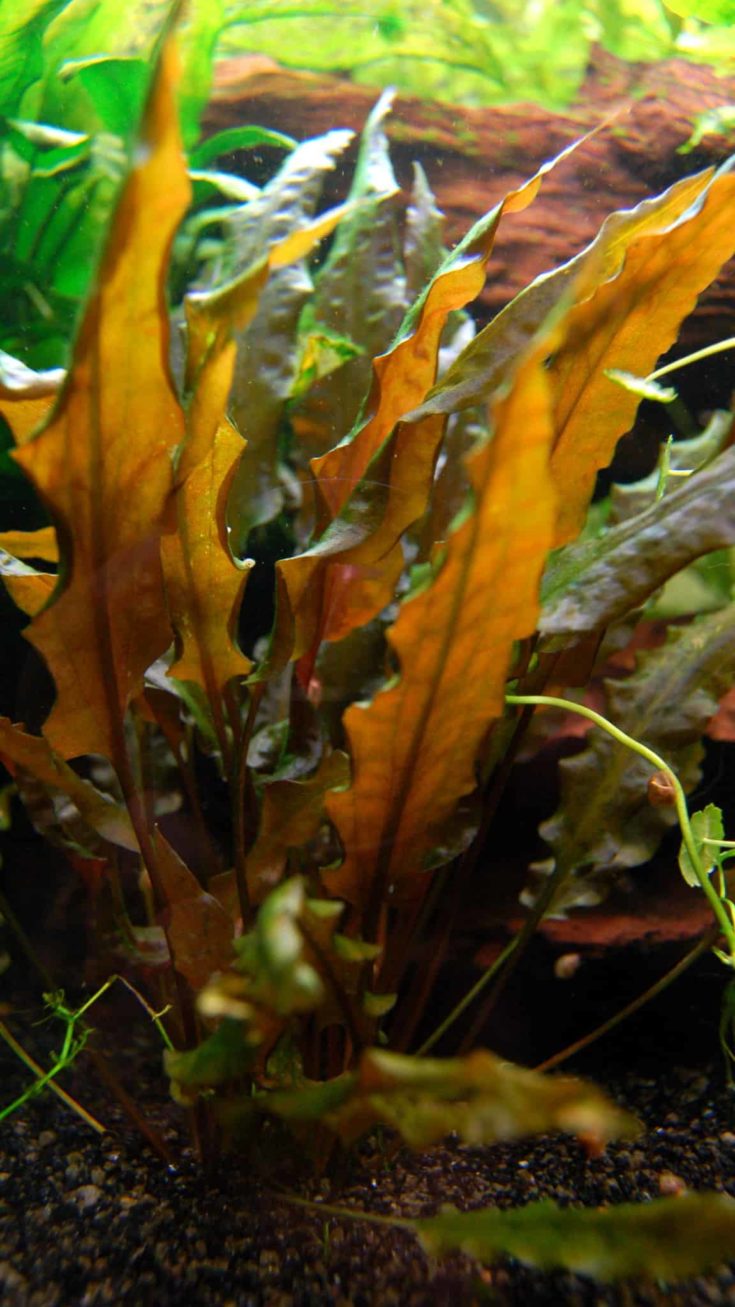
- Full name: Cryptocoryne wendtii, Wendt's Water Trumpet
- Care difficulty: Moderate
- Light Level: Low to High
Cryptocoryne wendtii, or Wendt's Water Trumpet is an aquatic herb that's native to Sri Lanka. The plant is very easy to grow and is pretty hardy too.
The species is widely used by aquarists and comes in a number of colors, including brown, green, red, and mixtures of those. The leaf texture varies too, as can the leaf size, growing from five inches up to 18 inches.
Once the plant has settled into its new tank environment, it grows easily. So, don't panic and assume that your plant has died if it appears to be suffering after you initially get it home. Eventually, new growth will appear from the roots, and the plant will be none the worse.
Crypto wendtii is propagated by splitting one specimen into small plants and reseating them in the substrate. The plant also produces rhizomes that spread out from the root system.
11. Bucephalandra
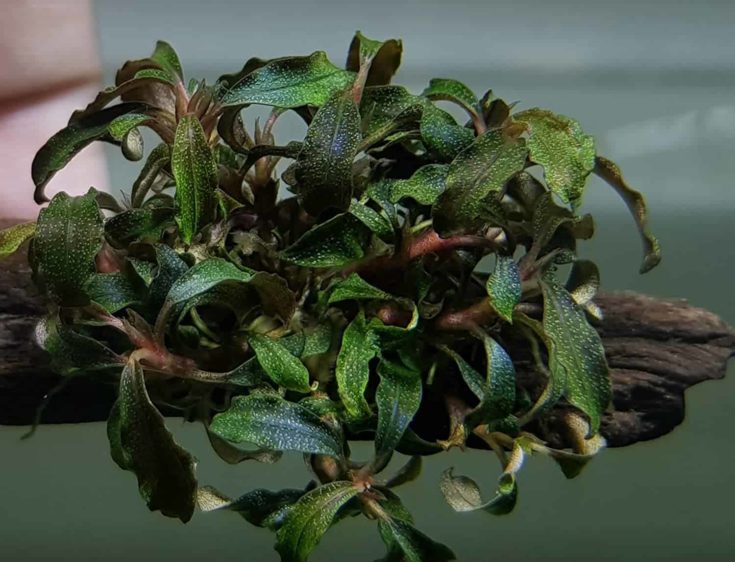
- Full name: Bucephalandra, Buce
- Care difficulty: Easy
- Light Level: Low to High
View on Amazon
Bucephalandra is also known as Buce, and it's one of the most popular new aquarium plants on the market right now, having only been around for a relatively short period of time.
The plant comes from the jungles of Borneo and comes in over 30 different varieties, each with its own unique size, shape, and coloration. Buce is very easy to grow, making it suitable for the novice aquarist. However, it is a very slow-growing plant, so you will need to be patient. When fully grown, the plant can reach up to 10 inches in height.
The plant's growth rate is directly related to the amount of light that it receives. Basically, the lower the light levels, the slower the plant grows. Bucephalandra is capable of growing submerged and above the water, making it perfect for a betta fish terrarium.
Unfortunately, algae do tend to grow on Buce leaves, so it's worthwhile investing in a cleanup crew, such as Amano shrimp or nerite snails.
12. Anubias Barteri
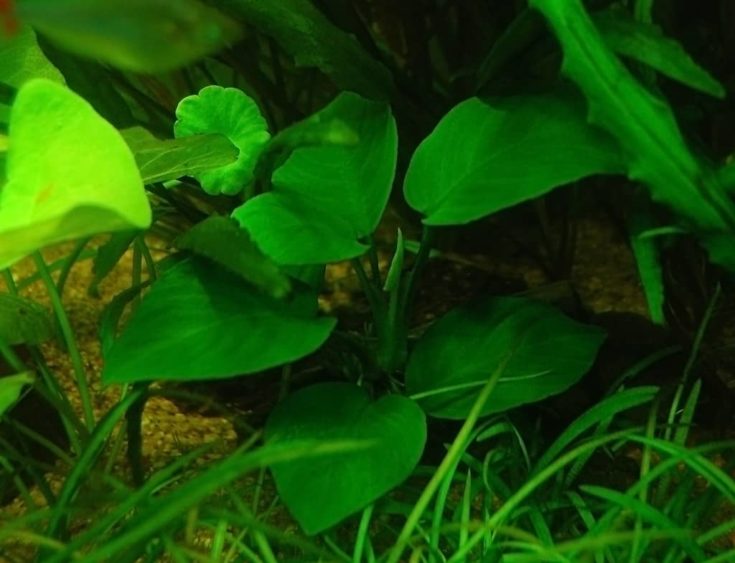
- Full name: Anubias Barteri (var. barteri)
- Care difficulty: Super-Easy
- Light Level: Low to High
Anubias barteri comes from West Africa and has the reputation of being pretty bulletproof when it comes to life in the aquarium.
Like other varieties of Anubias, Anubias barteri is very slow-growing. But don't let that put you off! The plant is incredibly easy to care for and will happily grow in a tropical tank with variable lighting and pretty much any water parameters.
Although fish and snails don't eat the tough leaves of the Anubias barteri plant, you may find that algae colonies do grow on it. Of course, a lazy betta will make good use of the plant's foliage as a resting spot!
This Anubias species grows to a maximum height of around 18 inches to 24 inches tall. You'll need to grow the plant attached to driftwood or rock, as the root system will rot if you bury the rhizome in the substrate.
Once the plant settles in the aquarium and begins to grow, it may produce a flower spike with a fragrant, white bloom once it reaches the surface.
13. Wisteria
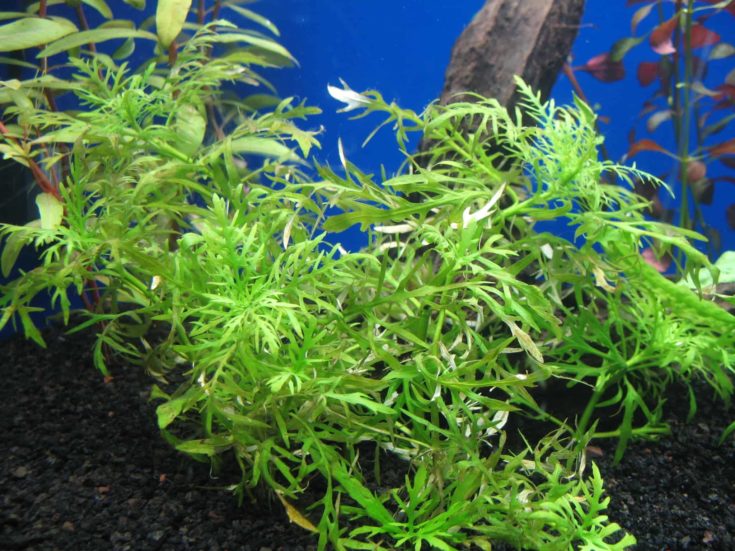
- Full name: Water Wisteria (Hygrophila difformis)
- Care difficulty: Easy
- Light Level: Low to Moderate
Water Wisteria is a favorite aquatic plant among hobbyists that does really well in low-light tanks, making it a great choice for your betta's home.
The plant is bright green with spreading, broad leaves that create very beautiful patterns and unusual shapes. Water Wisteria actually changes its shape, depending on how it's grown and planted. You can grow the plant as a single specimen or trim it to create a carpeting plant for use in the foreground of the aquarium.
When allowed to grow freely, Water Wisteria can reach over a foot in height. However, provided that you trim and shape the plant regularly, you can grow it in a small 10-gallon tank.
14. Vallisneria
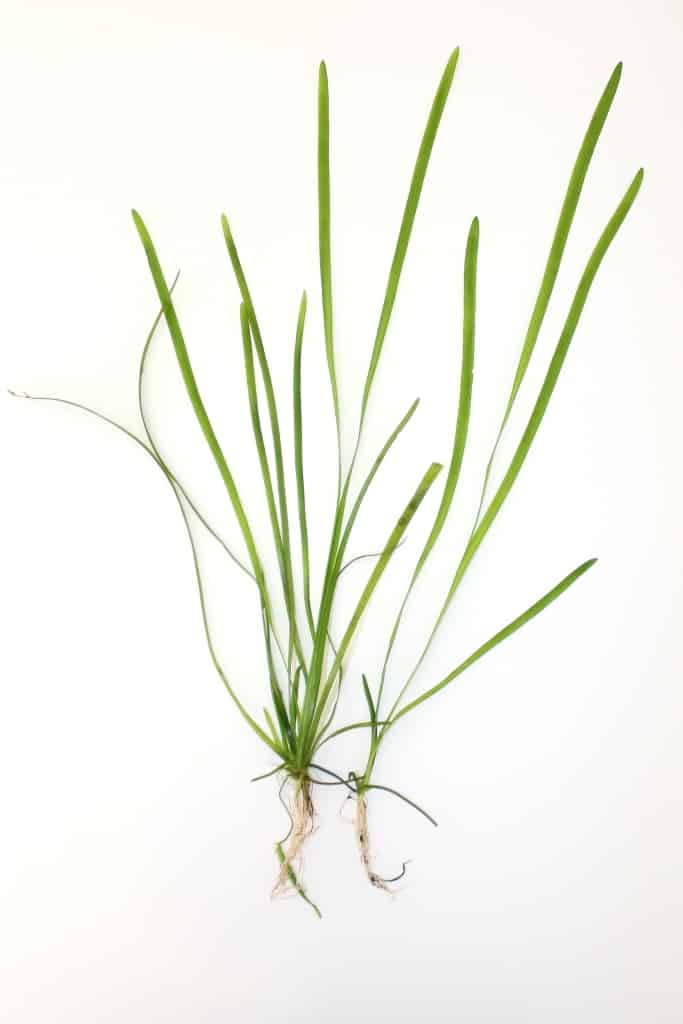
- Full name: Vallisneria
- Care difficulty: Easy
- Light Level: Low to High
Vallisneria is a tropical aquatic plant that resembles eelgrass and lends itself extremely well to life in an aquarium setting.
The plant is very easy to care for, so it's ideal for a beginner to add to their betta tank.
Vallisneria can be found in several varieties, including a very attractive variant called Vallisneria spiralis, which has twisted, corkscrew leaves. For a dramatic plant, you might want to check out Vallisneria gigantea that grows large enough to spread right over the surface of a betta tank of modest size.
To maintain the plant and keep it looking tidy, simply use scissors to trim away excess growth. These plants are ideal for use as a backdrop or to cover filtration equipment.
15. Banana Plant
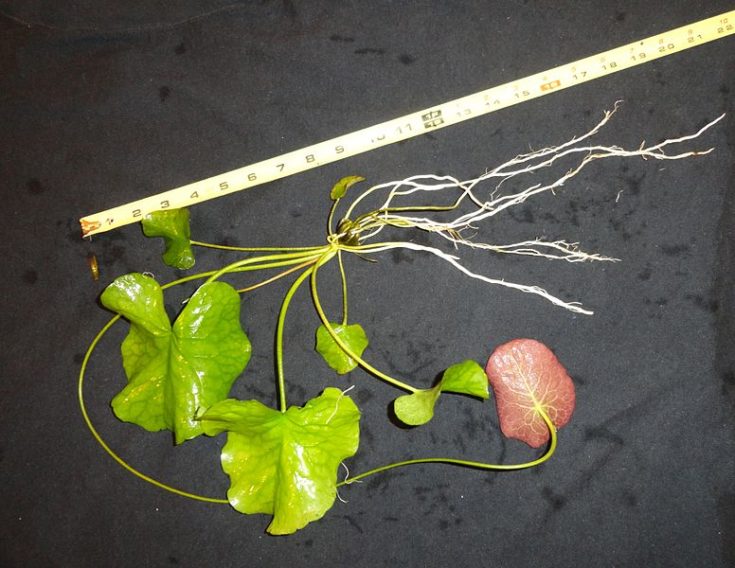
- Full name: Banana Plant (Nymphoides aquatica)
- Care difficulty: Easy
- Light Level: Low to High
Banana Plants are a common sight in the warm, slow-moving waterways of the southeastern U.S.
The plant is named for its swollen, banana-shaped roots that it uses to store nutrients. The Banana Plant has broad leaves that grow toward the water surface, where it can get maximum light. The color of your Banana Plant will be dependent on the amount and intensity of the light it receives and can be lime green through to reddish-purple.
The Banana Plant is very undemanding and can bring a multi-layered appearance to your aquascaping by creating a very appealing lily pad look. However, you do need to make sure that the plant's leaves don't obscure the surface completely, cutting off light to other plants and preventing your betta from feeding and breathing when he wants to.
16. Java Fern
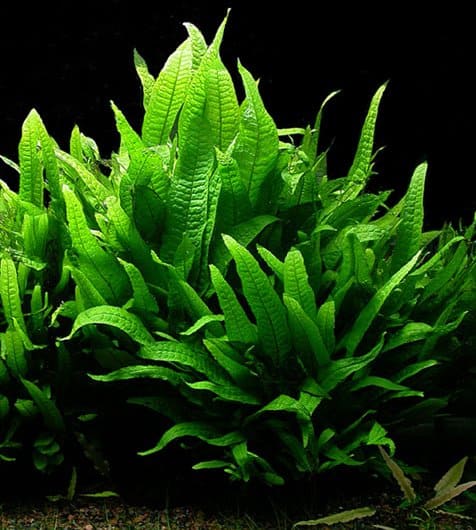
- Full name: Java Fern (Microsorum pteropus)
- Care difficulty: Super-Easy
- Light Level: Low to Moderate
Check The Price
The Java Fern is one of the most popular plants with hobbyists. Not only do the bright green leaves look very attractive, but the species is also super-easy to grow, provided that you don't bury the rhizome.
I've raised Java Ferns successfully in a low-light setup, fixed to a piece of bogwood with a piece of twine, and I find that's the best way to grow them. As the plants are quite slow to grow, you won't need to worry about maintenance too often.
The plant reproduces by putting out tiny baby ferns on its leaves. Simply remove the new plants and attach them to a hard surface in your aquarium.
17. Aponogeton Ulvaceus
- Full name: Aponogeton ulvaceus
- Care difficulty: Easy
- Light Level: Moderate
Aponogeton ulvaceus comes from Madagascar. The plant has light green translucent leaves that grow in delicate spirals up to a foot in length or more, making a fantastic showpiece in a large tank. The plant comes in a few varieties of different leaf shapes, colors, and sizes at maturity.
You generally purchase Aponogeton ulvaceus as a dried bulb, making it easy to get hold of the plants online if you can't find them in your local fish store. Simply bury the bulbs in your aquarium substrate and watch the plant quickly grow toward the surface in search of light.
A single root can produce over 40 leaves when given the right growing conditions.
18. Anubias Nana
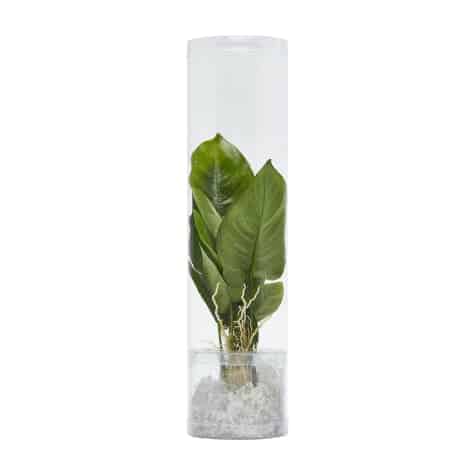
- Full name: Anubias Barteri var. Nana
- Care difficulty: Super-Easy
- Light Level: Low to High
Check The Price
Anubias nana is one of the best live plants for betta tank use! The wide leaves make the perfect hammock for a resting betta, and the plant is incredibly easy to care for.
The plant grows very slowly, is only small at maturity, and doesn't need bright lighting, so it's ideal for a small aquarium. Also, snails and fish dislike the leaves, so don't eat them. Anubias is versatile enough to be attached to driftwood, or you can root it in the aquarium substrate if you prefer.
At full maturity, the plant grows up to seven inches in height. To propagate Anubias nana, simply divide the rhizomes and attach the new plant to a rock or piece of wood, or anchor it in the substrate.
19. Christmas Moss
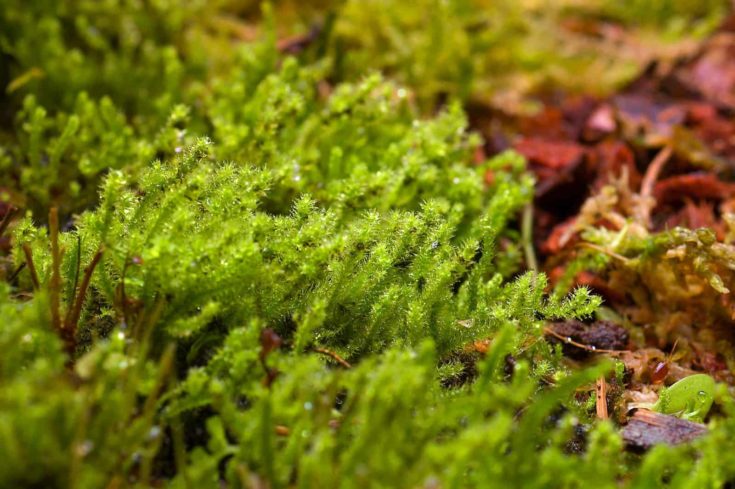
- Full name: Christmas Moss (Vesicularia montagnei)
- Care difficulty: Super-Easy
- Light Level: Moderate
Christmas Moss is similar to Java Moss in that it's extremely easy to grow, is very hardy, and looks much the same.
Vesicularia montagnei will be content with practically any light levels, although moderate light is preferred. This is a topical plant species, so the water temperature in the tank must be warm, ideally between 78o and 80o Fahrenheit.
Although Christmas Moss spreads very easily, rather than making a takeover bid for the whole tank, the plant grows in neat little bunches that resemble fir trees, hence the species' common name. You can use the plants to create a beautiful forest of tiny trees across the bottom of your betta tank.
20. Amazon Frogbit
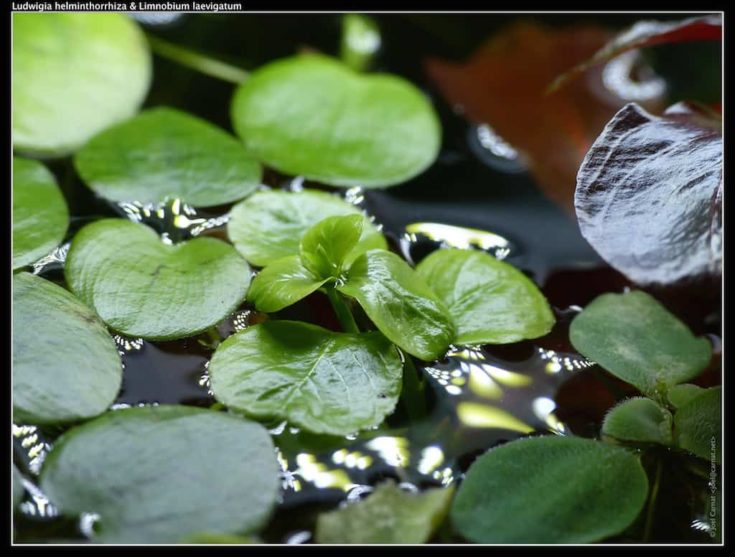
- Full name: Amazon Frogbit (Limnobium laevigatum)
- Care difficulty: Super-Easy
- Light Level: Low to High
Amazon Frogbit is a great alternative to Duckweed if you like the look but don't enjoy the takeover habit of the plant.
Amazon Frogbit is also a floating plant but it grows larger than Duckweed, so it's easier to tidy up and keep looking neat. The plant produces long tangles of roots that hang down in the water, creating a labyrinth of shady hideouts and nest-building spots for a betta and shelter for the fry of other fish in the tank.
The plant is useful in that it removes nutrients from the water. However, Frogbit can also cut off the light from anything dwelling beneath it. You can control the spread of the plant by placing a ring of plastic tubing in the water to restrict the plant's growth area.
21. Marsilea Minuta
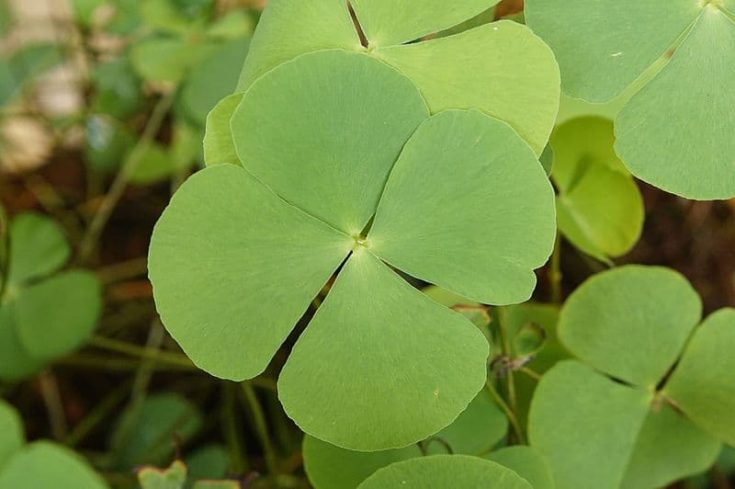
- Full name: Marsilea Minuta, Waterclover
- Care difficulty: Easy
- Light Level: High
Marsilea Minuta is a species of aquatic fern that's also commonly called water clover because of the shape of its leaves.
This can make a nice, unusual plant for a betta setup thanks to its hardiness and easy care requirements. Marsilea Minuta is tolerant of a broad range of water temperatures and is slow to grow.
That said, this species does need high lighting levels to thrive. If the plant doesn't receive sufficient light, it will bolt toward the surface and the light, rather than covering the substrate. When grown in suitable conditions, Marsilea Minuta forms a meadow of clover that provides excellent ground cover.
The plant spreads without propagation by putting out runners across the aquarium floor.
22. Water Sprite
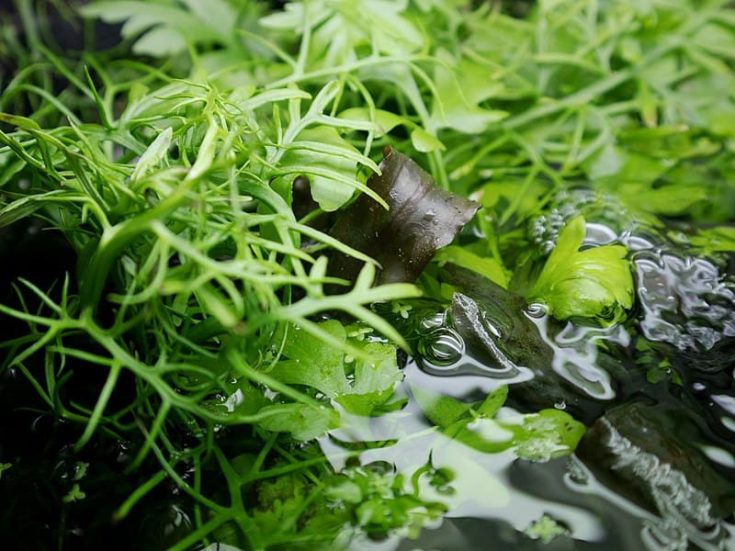
- Full name: Water Sprite (Ceratopteris thalictroides)
- Care difficulty: Easy
- Light Level: Moderate
Water Sprite is a species of aquatic fern that's loved by bettas as a perfect place to hide and explore amid the plant's forest of leaves.
The plant will grow in low light conditions, but it does do much better in a tank where the light levels are high. The more light they receive, the more rapidly and luxuriantly the plants grow, sucking up nutrients and cleaning the water too.
If you're looking for floating plants for betta fish to create some surface cover for nest-building and to provide plenty of hiding places for a shy betta, Water Sprite is a good option. Alternatively, you can grow the plant in the substrate. You'll need to trim the leaves at the base of the stem and discard them so that they don't decompose in the tank.
23. Java Moss
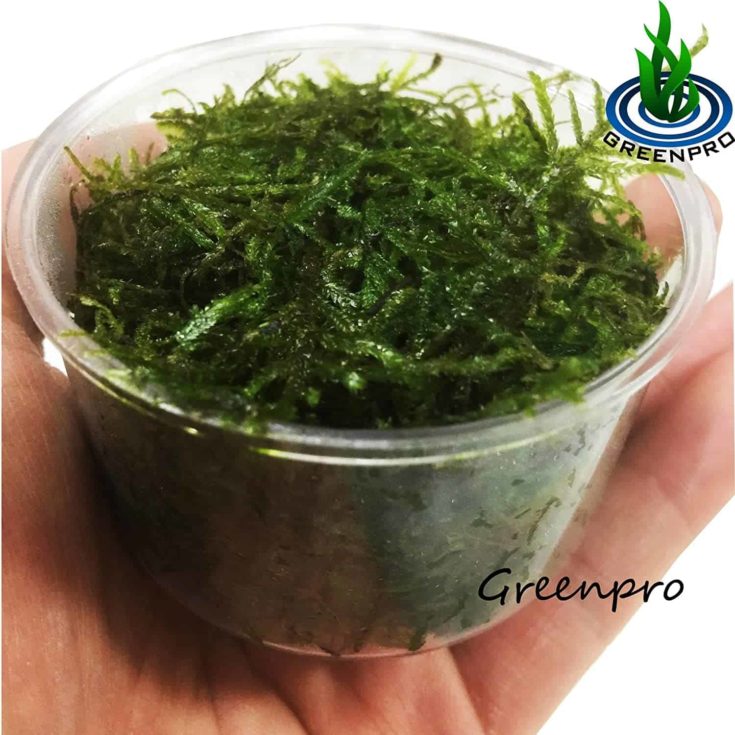
- Full name: Java Moss (Taxiphyllum barbieri)
- Care difficulty: Super-Easy
- Light Level: Low to High
Check on Amazon
Java Moss comes from Southeast Asia. This is one of the most extremely easy to care for and hardy aquatic plants you can find, which makes it a good choice for the beginner aquarist. This aquatic moss is also very visually appealing, and it grows well in both low and high light settings.
Java Moss is very versatile, growing attached to driftwood, planted in the substrate as a brilliant green carpet plant, or floating on the water surface. This plant makes a great choice for a betta or community tank and is readily available from all good fish stores and online.
24. Anacharis
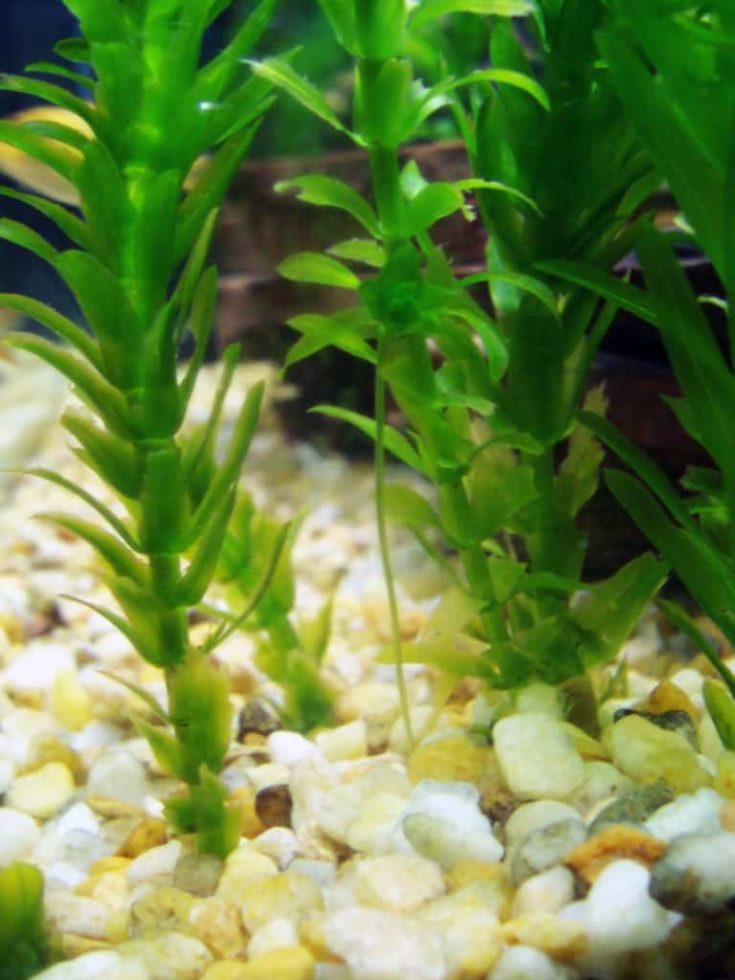
- Full name: Anacharis or Elodea (Elodea densa)
- Care difficulty: Super-Easy
- Light Level: Moderate to High
I love Anacharis!
This plant is extremely versatile, is easy to grow, and its brilliant green foliage looks fabulous in any tank. The plant helps to remove toxins from the tank and retard the growth of nuisance algae species by absorbing nutrients and creating shady areas.
You can successfully grow the plant in a coldwater setup, as well as in a tropical tank. However, Anacharis does need plenty of light. If lighting levels in the tank are too low, the plant loses its lower leaves and refuses to thrive.
The stems are tubular with whorls of three to six small leaves, ending in dense clusters at the end of each branch. Anacharis can be planted in the substrate or left to float freely when it trails white, string-like roots. During the summer months, the plant produces a white, three-petalled flower just above the water level.
Although a forest of Anacharis makes a great hiding place for fish, the plant is also appetizing to some fish species and to snails.
25. Hornwort
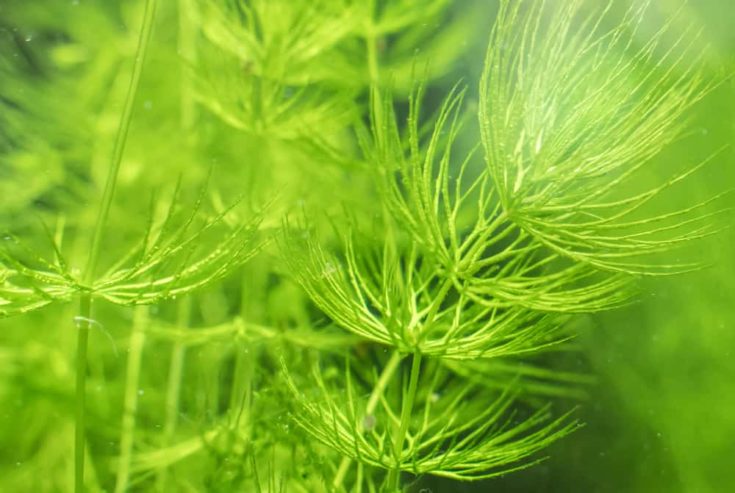
- Full name: Hornwort (Ceratophyllum demersum)
- Care difficulty: Super-Easy
- Light Level: Low to High
Hornwort's pretty, feathery bristle-like leaves, and rapid growth habit make it a firm favorite among hobbyists. There are over 300 species of this versatile plant, and it grows on every continent of the world, except Antarctica. That makes the plant tolerant of water temperatures from cool to tropical.
Hornwort is ridiculously easy to grow, either rooted in the substrate or allowed to float freely at the water surface, where it provides excellent cover for shy fish and vulnerable fry.
The plant does grow tall, easily reaching the water surface in any tank, so you will need to trim the stems regularly. Unfortunately, trimming Hornwort prompts the plant to shed its bristles vigorously, which can make a mess of your tank.
The propagation of the plant happens naturally via rhizomes that the plant puts out underneath the substrate.
26. Cryptocoryne Parva
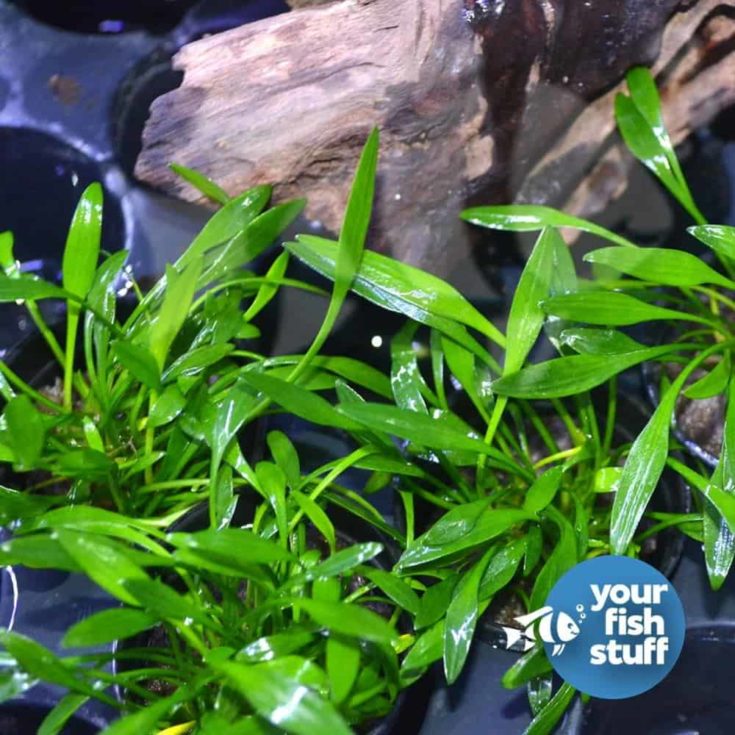
- Full name: Cryptocoryne Parva
- Care difficulty: Moderate
- Light Level: High
Cryptocoryne Parva is the smallest of this plant family, growing to only a couple of inches in height, which makes it the ideal choice for a small betta tank or for use as a carpet plant.
The plant is fairly undemanding when it comes to its care requirements, although it does prefer a well-lit tank. The species is a slow-grower, and low light levels can retard the growth rate even more. To produce good growth, you'll need to provide the plant with a nutrient-rich substrate and water column, and it also benefits from CO2 injections.
Unfortunately, Cryptocoryne Parva's slow growth rate makes it rather prone to green spot algae. However, a decent flow around the bottom of the aquarium can help to address that problem.
27. Alternanthera Rosaefolia
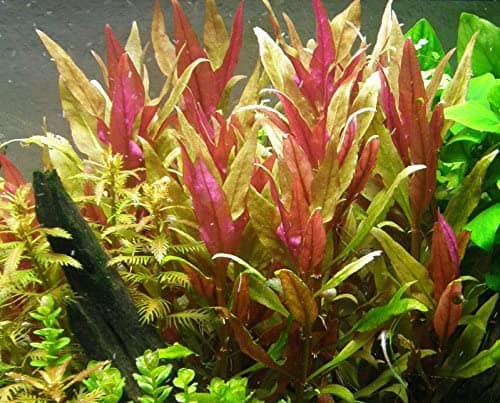
- Full name: Alternanthera Rosaefolia
- Care difficulty: Moderate
- Light Level: High
Learn More
Alternanthera Rosaefolia is a stunning background plant from South America that looks great in any tank. The plant has reddish-purple stems and long, pointed leaves that look incredible when set against a dark substrate and other vibrant green plants.
The main downside of this plant is that you do need a tank with high lighting levels to get the best out of it, both in terms of growth and color. However, if you have a relatively shallow betta tank, Alternanthera Rosaefolia can make a good choice. To encourage growth, CO2 injections and regular nutrient supplementation are essential.
In the right environment, you can plant groups of two or more specimens to create a lovely statement piece in your aquascape. Prune the plant regularly with sharp scissors to encourage bushy rather than tall growth. You can propagate the plant by taking cuttings and planting them in nutrient-rich aquarium soil.
Live vs. Fake Plants
Fake plants can look just as good as real ones, but which is best?
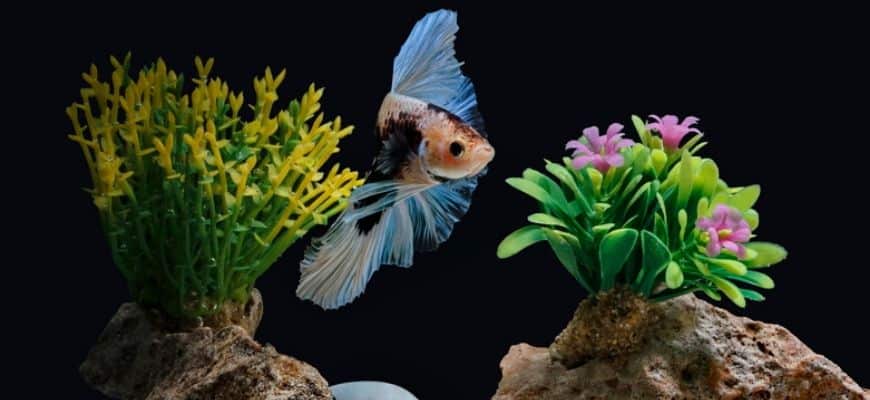
Live plants use CO2 and produce oxygen. The bacteria in your filtration system that process and remove ammonia from your tank need oxygen to do so. So, the more oxygen that there is in your tank, the more efficient the bacteria will be.
Beneficial bacteria grow on live plants. The more beneficial bacteria you have in your tank, the quicker ammonia will be broken down. The less ammonia in the tank, the fewer nitrates there will be, making it harder for nitrate-eating algae to grow and creating a healthier environment for your betta.
Natural planting helps to recreate the betta's natural environment, helping your fish to feel more at home. The main disadvantage of live plants is that they need constant pruning to keep them looking nice. Also, your tank lighting will influence what plant species you can grow.
In comparison, fake plants require no maintenance, don't care about lighting levels, always look great, and you can remove them from the tank to clean them when required. However, always use soft, silk plants rather than plastic ones, which can have sharp edges that could injure your betta.
Best Fake Plants For Bettas
Here are four beautiful fake plants that are perfect for your betta's tank.
1. Marina Natural Silk Red Plant
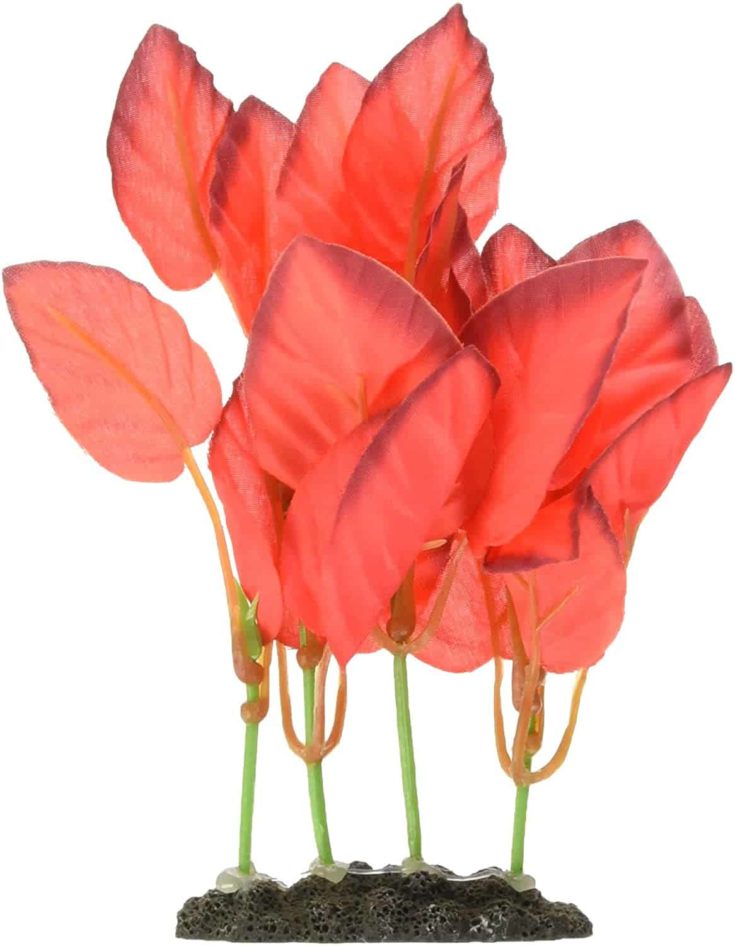
This natural-looking silk plant is fade-resistant, super-soft, and safe for your betta. At just six inches tall, the plant makes a lovely foreground piece and is designed to gently move with the current.
Available on Amazon
2. Zoo Med Betta Hammock
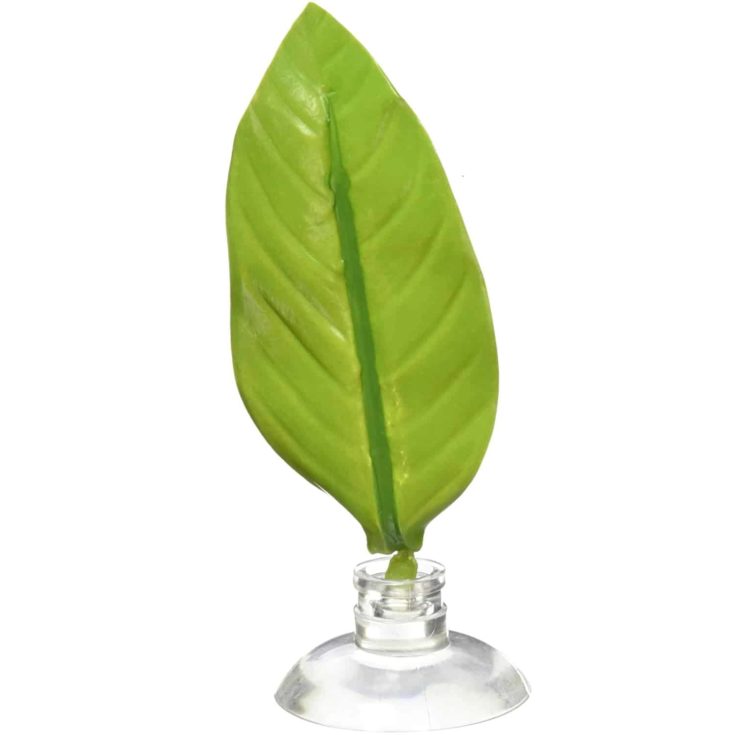
This flat-leaf betta hammock comes with a suction cup, enabling you to fix the leaf to the side of your betta tank. The material is soft and safe to use, and your pet will love to rest on the leaf when he needs to take a nap.
Check On Chewy Check On Amazon
3. Imagitarium Inline Betta Plant
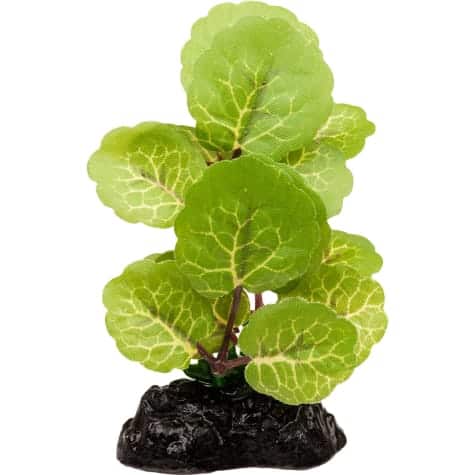
This beautiful, realistic silk plant makes a perfect foreground decoration and is ideal for a betta resting place too. The material is extremely durable, won't fade, and is safe to use.
Check on Petco
4. Marina Ecoscaper Silk Plant
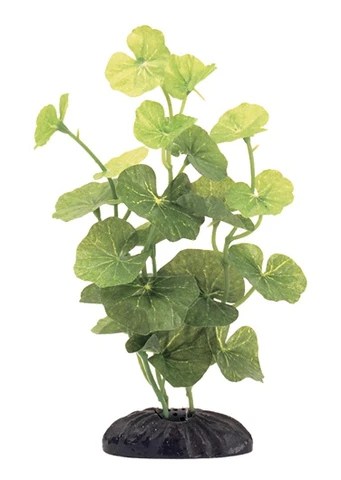
This hydrocotyle silk plant looks and behaves just like the real thing, but has no maintenance requirements!
The colors are natural-looking and translucent, and the shades won't fade. The plant is just eight inches tall, making it the perfect choice for a midground decoration.
View on Amazon
Conclusion
Did you enjoy my list?
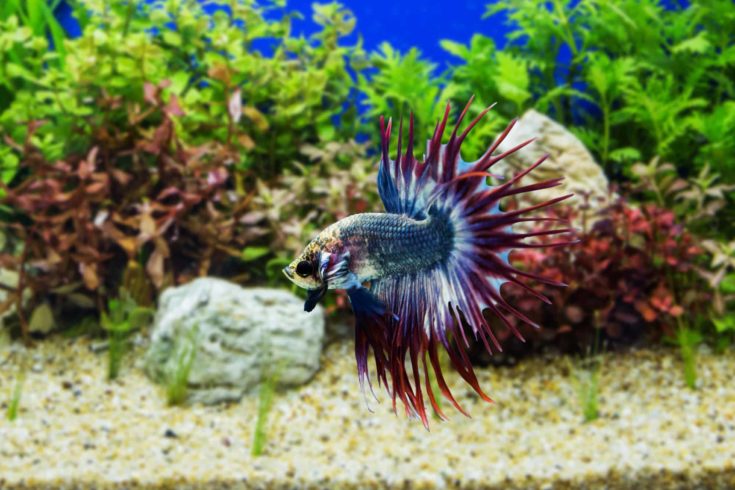
Now, armed with what you've learned from this guide, you can choose aquarium plants for your betta tank with confidence.
Living plants provide additional oxygen, promoting the growth of healthy bacteria and removing harmful toxins from the water. Your betta fish will love exploring and resting within the plants' leaves, and floating plants can encourage natural bubble nest building too.
Fake plants can make a nice substitute for the real thing. Silk plants require no maintenance or special lighting requirements, and they can be removed for cleaning when necessary. I would not recommend using plastic plants, as they can be sharp and potentially dangerous for your fish.
Why not share your thoughts on aquarium plants in the comments section below, and don't forget to share the article if you liked it!
How Old Are the Baby Bettas at Petco
Source: https://www.tankarium.com/best-plants-for-betta-fish/
Postar um comentário for "How Old Are the Baby Bettas at Petco"